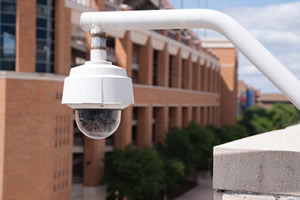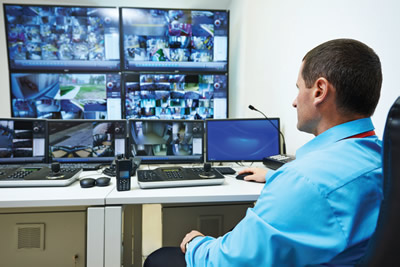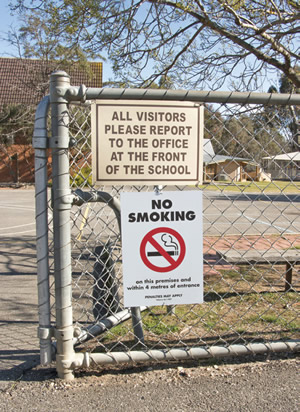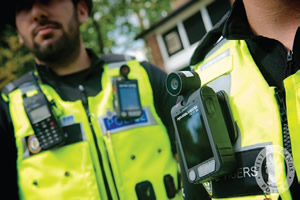Policies are Critical

PHOTO © CHRISTOPHER BOSWELL/SHUTTERSTOCK
The use of security technologies in the school environment has increased dramatically over the last several decades. There is no shortage of vendors offering products in the arena of school safety. There are many quality tools available, but careful research should be conducted before any purchase is made. The more significant issues related to security technologies in schools are those of training and policies and procedures. The failure of security technologies in schools are typically a direct result of not making these two issues a priority. The best available hardware and software will never overcome a lack of training or poorly written policies.
Video surveillance has led the way in terms of security technology that began appearing in schools many years ago. There are many issues to consider when exploring the possibility of installing or upgrading this type of equipment in the school environment. I can remember when the storage format connected to this type of technology was a VHS tape. Most policies required that each tape be rotated every 30 days. Every time the tape was reused, the quality degraded and eventually became unusable. Now, we are fortunate to be able to store the images electronically. The images are much better and can be stored as long as needed.

PHOTO © DMITRY KALINOVSKY/SHUTTERSTOCK
There are several questions that must be answered when considering video surveillance technology. The first and most important question would have to be what is the ultimate goal of video surveillance on campus. This, of course, brings us back again to the issue of policy and procedure.
There are two approaches to this type of technology. One approach is to provide a trained security team whose goal is to monitor activity for the entire school day and, in some cases, around the clock. This, of course, requires a tremendous commitment in terms of equipment, personnel and training. For many school districts this is cost-prohibitive. There are a few school districts where the funding is available for this approach. Proper policy is critical with this approach to ensure that personnel are performing tasks in a manner that justifies and supports the overall goal.
The second approach to video surveillance is to utilize the technology more for investigative purposes. In this approach, the system may be monitored sporadically but is not monitored on a routine basis. This approach also requires stringent policy issues especially in regards to access and storage. Access to the stored data should be limited to school administration, security staff and school resource officers. A strict chain of custody should be clearly laid out in the policy and procedure manual. It is critical to properly preserve electronic information for potential court cases.
After the goal has been established, the next step is to work with a professional in this field to conduct research into the selection of the proper equipment as well as the selection of the right professionals to properly install the equipment.

PHOTO © KIM BRITTEN/SHUTTERSTOCK
Visitor entry management systems are another security technology tool that has become quite popular in recent years. The key to these systems being effective is to designate a specific public entry point into the building during the school day. It is also important that the other perimeter doors of the building be secured to eliminate public entry at other points of the building. Again, we must first seek to understand what the goal is in implementing such a system. When used properly, this tool can help to significantly reduce incidents of trespassing. It also signals to the public your intent to maintain a safe school environment by documenting and screening visitors as they enter the building.
The basic concept of visitor entry management systems is that visitors are required to present a government issued identification to the receptionist at the entrance lobby of the school building. The identification card is then scanned and entered into the system. Some of these systems are designed to check the visitor’s identification against the national sex offender database. Most of the systems are also customizable so that information such as custody orders and the like can be easily added. The system that is selected should also be capable of immediately printing a visitor identification badge once the visitor’s identification has been scanned.
As with video surveillance systems, there are several excellent visitor entry management systems available. However, the systems are only as effective as the policies that must accompany them.
For a second time now, this article references the critical importance of soundly written and enforced policies, and there is much to consider regarding policies for this particular type of technology. For instance, is your school district going to require a government-issued identification be presented by every guest entering the school? If the answer is no, then do not waste your school’s effort or dollars on this particular type of technology. You must not only have strong policies regarding visitor entry management, but the policies must be enforced on a consistent basis.

PHOTO © WEST MIDLANDS POLICE
Body cameras. There is a lot of discussion currently about the use of body cameras by police officers and, especially, those who work in schools. If this is something that you are considering for your school environment, be sure that you have a detailed and clear written policy for the use of these tools. The best way to accomplish this would be a collaborative effort between the school district and your local law enforcement agency.
If the system you select has the capacity to check the national sex offender database, then this will present another challenge in regards to your policy. How will your school respond if the system alerts that a visitor’s identification is a match to the sex offender database? Will you notify law enforcement to respond? What if the visitor is a custodial parent of a student in your school building? These are all important questions that you must deal with within the guidelines of your school policy, but first and foremost, the laws of your state.
Signage is another important aspect of the success or failure of a visitor entry management system. Signs should be posted at every public entrance into the building clearly advising visitors that they must present a government issued identification in order to enter the building. This should also be publicized on the school districts website as well as in school newsletters. It is important to be proactive with your community in explaining the benefit of this technology. The more information that you provide to the public regarding what is required of them to enter the building, the more accepting your parents and visitors will be of this important addition to school safety and security.
There are many other security technology tools that are up and coming. Body cameras for law enforcement are perhaps the most debated tool at this current time. It becomes an even more interesting debate when we consider their use in schools by law enforcement, especially school resource officers. If this is something that you are considering for your school environment, then once again the most important aspect of this will be the written policy for the use of these tools. This will certainly need to be a collaborative effort between the communities’ school district and law enforcement agency. An excellent resource for assistance is a paper entitled, “Implementing a Body Worn Camera Program,” which is produced by the COPS office at the U.S. Department of Justice.
The future of security technologies in schools is certainly bright. But we must be certain that we remain focused on the goals as well as policies and procedures in order for these tools to achieve the success that we desire.
This article originally appeared in the issue of .